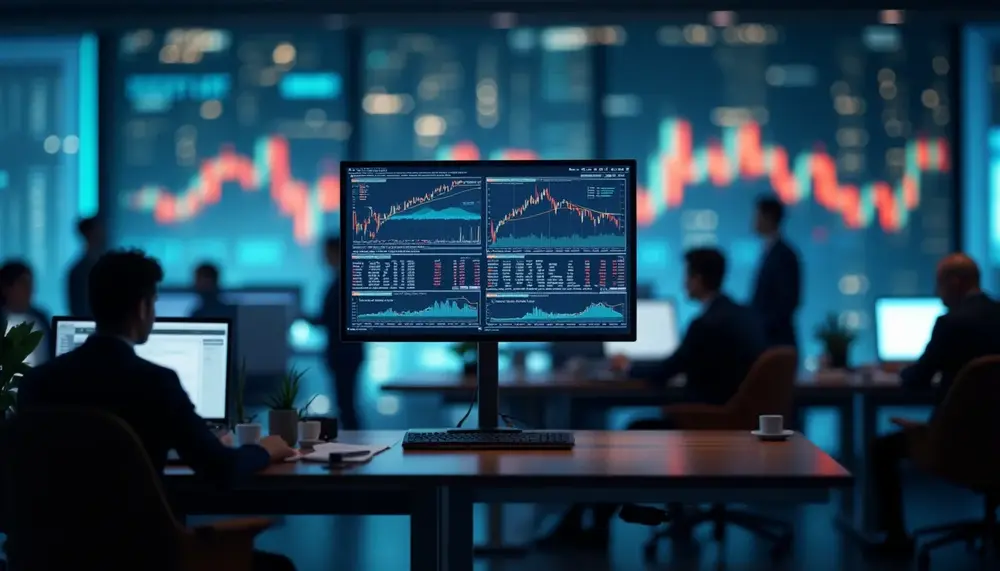Table of Contents:
Introduction to Trading Ahead Understanding the Mechanics of Trading Ahead Key Differences Between Trading Ahead and Similar Practices Real-World Examples of Trading Ahead The Importance of Regulating Trading Ahead Protecting Investor Interests Through Market Regulation Conclusion: Navigating the Complexities of Trading Ahead
So, what’s the deal with Trading Ahead? Well, it's one of those financial market practices that’s both intriguing and, let’s be honest, a bit controversial. Imagine you’re at a bustling marketplace, and there’s a vendor who, instead of selling you the freshest apples, decides to keep them for himself, anticipating a price hike. That’s kind of what Trading Ahead is like, but with stocks and financial instruments.
In essence, Trading Ahead happens when market makers or professionals place their own trades before executing those of investors. They use the firm's account to jump the queue, if you will, instead of matching the existing bid-ask prices of investors. This practice is a no-go because it undermines the interests of investors, plain and simple.
Now, you might be wondering, how does this differ from other sneaky tactics like front-running or insider trading? Well, while front-running involves acting on non-public information to gain an edge before it hits the market, Trading Ahead is more about using one's position to prioritize personal trades over those of clients. Insider trading, on the other hand, is all about dealing with confidential info about company events that aren't public yet, like mergers.
Picture this: a market maker gets a buy order and instead of fulfilling a sell order from an investor, they use their own stock to make the sale. Why? To benefit from potential price movements that favor the company. It's a classic example of Trading Ahead in action.
Regulating Trading Ahead is crucial. Why? Because it’s all about keeping the market fair and square. Rules like the FINRA Rule 5320 in the U.S. make sure that the company's interests never come before the client's, with a few exceptions for big institutional orders. This helps maintain trust and integrity in the markets.
Ultimately, protecting investor interests through market regulation is a top priority. By clamping down on unfair practices like Trading Ahead, regulatory bodies aim to lower investment costs for everyone involved. It’s about ensuring that the playing field is level and that all market participants can trade with confidence.
In conclusion, navigating the complexities of Trading Ahead requires a keen understanding of the rules and a commitment to fairness. By staying informed and vigilant, investors and market participants can better protect themselves and ensure that the markets remain transparent and equitable for all.
Understanding Trading Ahead: Key Questions
What is Trading Ahead?
Trading Ahead is when market makers or professionals place their own trades before those of investors, using the firm’s account rather than matching existing bid-ask prices. This practice is prohibited as it undermines investor interests.
How does Trading Ahead differ from front-running?
While front-running involves acting on non-public information to gain an advantage before it reaches the market, Trading Ahead prioritizes the trader's own orders over those of clients without necessarily relying on non-public information.
Why is Trading Ahead considered unfair?
It is considered unfair because it places the financial interests of the firm or individual above that of the client, therefore undermining the client’s position and the trust in market fairness.
What rules regulate Trading Ahead practices?
Trading Ahead is regulated by rules such as the FINRA Rule 5320 in the U.S., which ensures that a firm’s interests do not precede those of the client, with exceptions for significant institutional orders.
What role do regulators play concerning Trading Ahead?
Regulators aim to guarantee fair market practices by overseeing and restricting practices like Trading Ahead. This helps lower investment costs and maintains a transparent and equitable market for all participants.












